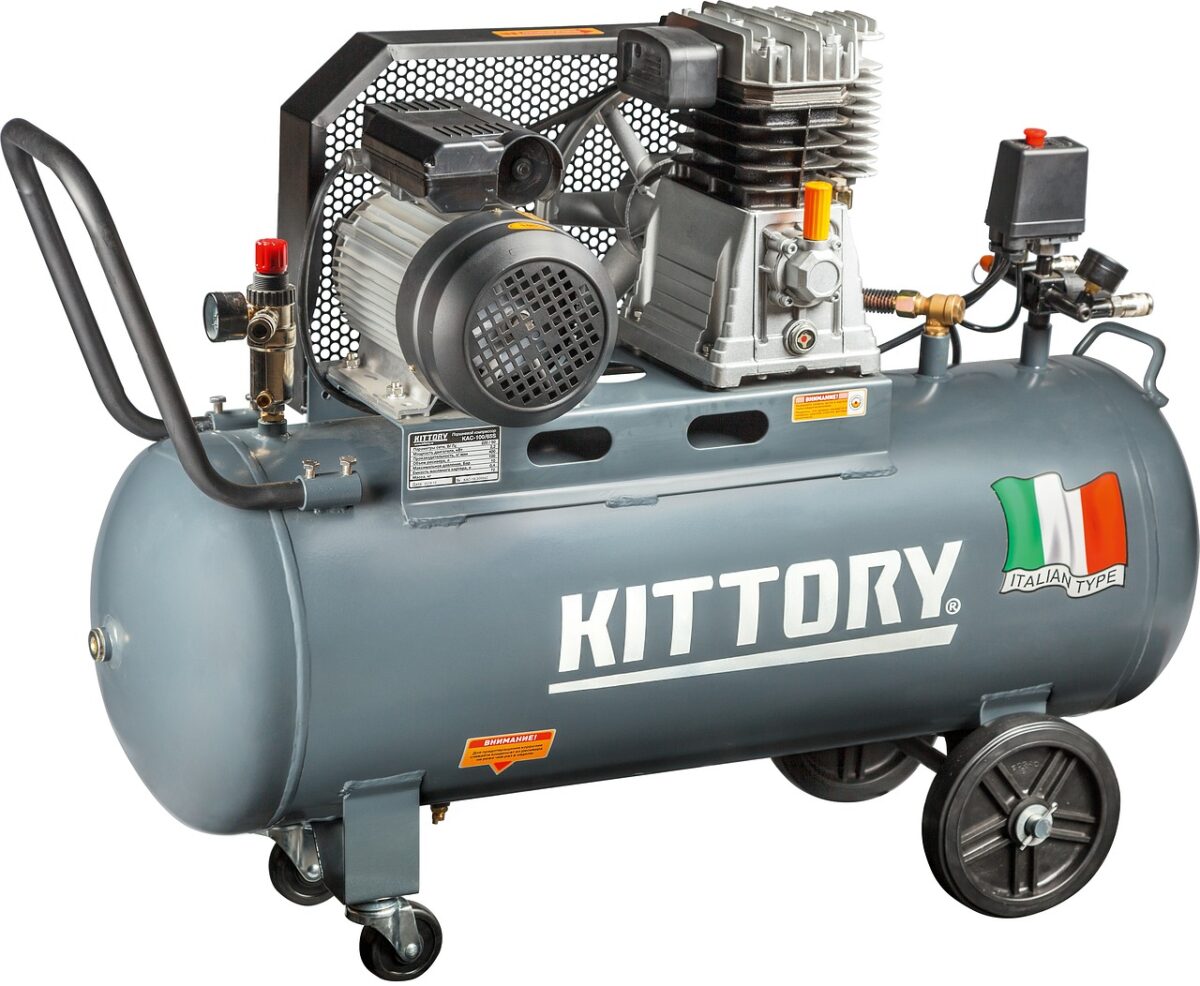What is an air dryer compressor? This is a common question I receive from those seeking my expert assistance in home improvement projects.
Compressors won’t be able to remove water vapor and other contaminants without quality dryers, resulting in dirty air that could damage the machine. For this reason, I’m going to explain what an air dryer compressor is, including its working principle, types, purpose, and applications.
What Is an Air Dryer Compressor?
An air dryer compressor is a specifically designed machine that significantly removes water in compressed air. In effect, the device minimizes compressed air contamination while avoiding corrosion and controlling malfunctions in pneumatic tools and equipment. This provides a safer and more sanitary work environment.

I’ve encountered various types of compressors when working on DIY projects, seeing how each work in different ways to remove moisture and contaminants from compressed air. Learning its functions and differences lets you choose the best option for your specific needs and applications.
Air Dryer Compressor: A Quick Guide for Beginners
An air dryer compressor plays a crucial role in enhancing the performance of your DIY improvement tools. Understanding its components, purpose, and applications will help prevent corrosion, malfunctions, and other issues with moisture-sensitive operations.
| Air Drying Stage | Working Principle |
| Air compression | Compressing the air by raising the temperature |
| Cooling | Cooling down the inside temperature to turn vapor into water |
| Moisture removal | Using refrigeration, membrane, desiccant, or deliquescent dryer to remove moisture |
What Is the Working Principle of a Compressor With an Air Dryer?
The working principle of an air compressor with a dryer typically follows these air drying stages:
- Air compression: The air compressor compresses air and raises its temperature. As a result, it concentrates atmospheric contaminants, primarily water vapor.
- Cooling: When the temperature inside the compressor cools down, the vapor condenses and turns into water.
- Moisture removal: The dryer removes moisture from the compressed air using different techniques, depending on the type of dryer.
What Does a Dryer Compressor Do?
Investing in a quality dryer is vital for maintaining a safe, productive, and efficient work environment. As someone who deals with compressors, I can attest to their numerous benefits.
Compressed Air Storage
The primary function of a compressor is to store compressed air and remove moisture from it. When air is compressed, its temperature increases and water vapor concentration rises. Removing this excess moisture is crucial to prevent air tool damage and produce high-quality outputs.
Here are some key components and their functions:
- Compressor: Generates compressed air.
- Air receiver tank: Stores the compressed air.
Air Filtering
To address the issue of moisture and other airborne contaminants, I use the best air compressor filter dryers:
- Pre-filter: Removes solid particles and moisture in aerosol form.
- Main filter: Eliminates oil and other impurities.
- Post-filter: Ensures that the remaining moisture and particles are removed.
What Are the Types of Dryer Compressors?
These are the different types of compressors available in the market. They are essential for various industries and DIY projects, as they help remove moisture from compressed air.
Refrigeration Dryers
I personally like refrigeration dryers because they are energy-efficient and reliable. These dryers use a cooling system to lower the air temperature, causing the moisture to condense and drain away. They are ideal for light to medium-duty applications and can reach pressure dew points as low as 35 degrees Fahrenheit.
- Easy maintenance
- Cost-effective
- Ideal for general-purpose applications
Desiccant Dryers
When it comes to applications that require extremely dry air, desiccant dryers are my go-to choice. They use a desiccant material, such as activated alumina or silica gel, to absorb moisture from the compressed air. These dryers can achieve pressure dew points well below -40 degrees Fahrenheit.
- High drying capacity
- Suitable for sensitive applications
- Can achieve ultra-low dew points
Deliquescent Dryers
I appreciate the simplicity and cost-effectiveness of deliquescent dryers. They contain a salt tablet (desiccant) which dissolves when it comes in contact with moisture, thus lowering pressure dew points. Due to their simplistic design, they require minimal maintenance.
- Simple design
- Easy to install
- Low maintenance requirements
Membrane Dryers
Lastly, I find membrane dryers unique, as they utilize a semi-permeable membrane to separate water vapor from compressed air. The dry air exits on one side, and the moisture-rich air is vented. They are compact, lightweight, and suitable for low-flow rate applications.
- No moving parts
- Quiet operation
- Compact and lightweight
What Are the Applications of Compressors With Air Dryers?
These devices are crucial for industries relying on clean, dry compressed air to optimize operations and maintain high-quality standards. I’m excited to share where I normally use dryer compressors in various sectors.
With their wide range of applications spanning from manufacturing to electronics, compressors play a significant role in today’s industrial landscape.
Manufacturing
Dryer compressors are essential for ensuring the effective operation of pneumatic tools and machinery in the manufacturing industry. Using clean, dry air helps prevent equipment corrosion, wear, and premature failure. Some common applications in this industry include:
- Assembly lines
- Robotics
- CNC machines

Food and Beverage
The food and beverage industry requires high-quality compressed air for food safety and preventing contamination. Compressors are widely used to maintain an optimal environment for:
- Food packaging
- Aeration in fermentation processes
- Cleaning equipment
Automotive
Air compressors hold significant roles in the automotive industry. Compressors have helped me ensure high-quality performance and a prolonged lifespan of equipment and machinery using high-quality filtered air. Here are some typical applications:
- Spray painting
- Tire inflation and mounting
- Pneumatic tool operation
Electronics
Electronics manufacturing and assembly require dry, clean air to avoid malfunction caused by moisture-related complications. Air compressors are used in various processes, such as:
- PCB assembly
- Component drying
- Automated testing systems
How to Choose the Right Air Dryer for a Compressor?
When looking for the perfect dryer compressor, I usually start by determining the dew point requirements of my application. For example, if it’s below 37.4 degrees Fahrenheit, then a desiccant absorption dryer is the best choice for me.
Another essential factor to consider is the air compressor’s size and capacity. I use a straightforward formula to find the right-sized dryer considering the total airflow and correction factors. The dryer must match the air compressor’s ability to prevent inefficiencies and ensure proper air treatment.
Here are a few key points to remember when choosing a compressor:
- Determine the dew point requirements of your application
- Consider the air compressor’s size and capacity
- Match the dryer with the compressor’s capacity
- Review and compare different models and product features
- Prioritize energy efficiency and ease of maintenance
By following these guidelines, I am well on my way to finding the ideal dryer compressor for my needs, ensuring smooth and moisture-free operation.
Related Questions
What Is the Difference Between a Compressor and a Dryer?
A compressor basically converts power into potential energy by pressurizing air, while a dryer removes moisture from the tank of an air compressor, keeping it dry. When you use these two devices together, you can achieve clean and dry compressed air, optimal for various applications.
What Are the Benefits of Using an Air Dryer With a Compressor?
Among the benefits of using a compressor with a dryer is improving air quality by eliminating moisture from compressed air. Moreover, it extends the lifespan of your air tools and equipment. Another advantage is that it lowers the risk of damage caused by freezing temperatures.
How to Maintain and Troubleshoot a Dryer in a Compressor?
When maintaining air compressors, I generally check and change the oil regularly. I also periodically drain the condensate and inspect the dryer’s components to ensure smooth operation. If you face moisture issues, you may need to inspect the condensate trap or replace the failed trap.
Conclusion
Air dryer compressors greatly reduce the chance of contamination and improve the efficiency of various applications. I’ve seen the benefits of properly maintained dryer systems, and I highly recommend them to anyone working with compressed air in their DIY projects.
